
| Introduction | land as a focus | cultural landscapes | Themes | Thesis | Vocabulary |
 "A natural reciprocal nurturing of ocean
and earth creates abundant wildlife in coastal wetlands. Here, salt and
fresh water flow together in tidal marshes, creating rare shorelines of unsurpassed
natural fertility by converting solar energy into food. Swelling tidal fluctuations
recycle vital nutrients that encourage rapid vegetational growth followed by
quick decay.....Both native and migratory wildlife thrive on the tide-mulched
marsh-grass fields." (Siry, p. 3.)
"A natural reciprocal nurturing of ocean
and earth creates abundant wildlife in coastal wetlands. Here, salt and
fresh water flow together in tidal marshes, creating rare shorelines of unsurpassed
natural fertility by converting solar energy into food. Swelling tidal fluctuations
recycle vital nutrients that encourage rapid vegetational growth followed by
quick decay.....Both native and migratory wildlife thrive on the tide-mulched
marsh-grass fields." (Siry, p. 3.)
"Throughout the nation today a series of state and federal estuarine refuges exist as quiet testimony to the ideals, efforts and commitment of local conservation groups, planners, engineers, and scientists. These advocates possess a resolute maturity in asserting that some places must be set aside for future generations because, as Rachel Carson once remarked, 'man's way is not always the best.'" (p. 17.)
1, The Frontier
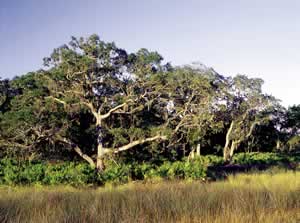 "The river valleys of the Atlantic shore cut through the coastal plain,
creating large numbers of estuaries, many of which are bordered by extensive
tidal marshes. These coastal wetlands have been held in public trust since the
original colonial grants. Unlike rights in other portions of the public domain,
the public rights to fishing, hunting, and navigation on tidal lands could not
be extinguished by sale to private concerns." (p. 18.)
"The river valleys of the Atlantic shore cut through the coastal plain,
creating large numbers of estuaries, many of which are bordered by extensive
tidal marshes. These coastal wetlands have been held in public trust since the
original colonial grants. Unlike rights in other portions of the public domain,
the public rights to fishing, hunting, and navigation on tidal lands could not
be extinguished by sale to private concerns." (p. 18.)
2
"Even prior to the nineteenth century the necessity of marshes was disregarded
in favor of a continued reliance on estuarine dredging and coastal reclamation.
As the image of the garden symbolized the eighteenth century intellectual recognition
of humanity's role in taming and cultivating wild landscapes, the creation of
a seaside agrarian environment encouraged the replacement of swamps and marshes
with diked meadows or farmlands. Urban growth, too, fostered dumping, drainage
canals, wharves and commercial shoreline development. As diseases repeatedly
swept the crammed and dingy tidewater cities, the pastoral image of the garden
became a paramount influence on scientists and writers, relegating noxious and
obstructing coastal wetlands to a role as inefficient backwaters." (pp. 32-33.)
 The
peculiar place neither landscape nor seascape.
The
peculiar place neither landscape nor seascape.
3 Naturalists, Artists and Poets
"Tidelands, however, represented a complex problem of public administration depending on the coastal territory in question. The proprietary responsibility
for these wetlands that had existed in the colonies was derived from the crown,
to be held in perpetual trust for the promotion of navigation and the public
privileges of fishing and hunting." (p. 39.)
4, Commerce and the Public Trust
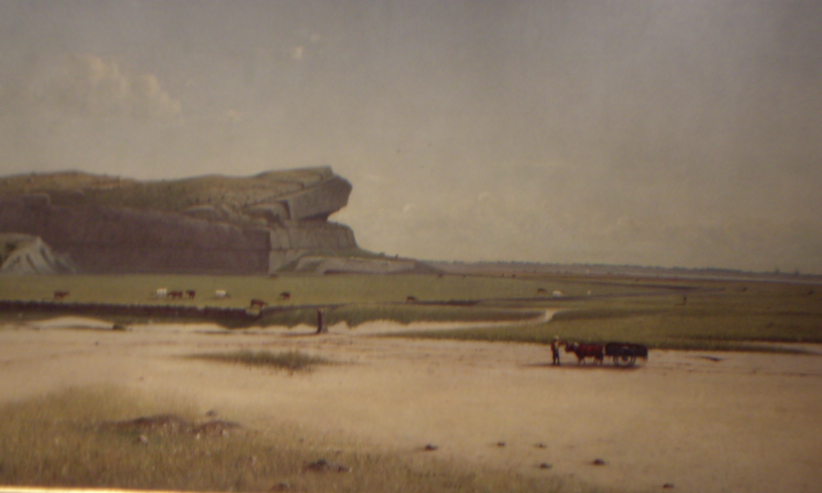
National sympathy for protecting nature dramatically appeared among elite professionals
before the Civil War. These preservation advocates conceived the intellectual
and tactical foundations of future federal resource protection policies -- especially
for fisheries, wildlife, land and water. (p. 62.)
5 An organic revolt against the prevailing laissez faire policies.
"After the War between the States, the doleful predictions of George Perkins
Marsh concerning fisheries and estuarine habitats churned in the mind of his
confidant and supporter, Spencer Fullerton Baird. As a naturalist and assistant
director of the Smithsonian Institution, Baird knew that sport and commercial
fisheries were dependent on anadromous fish. These fishes lived most of their
existence in the sea but required the fresh-water river sources to spawn the
next generation of salmon, herring, or shad. Often the juveniles of these species
lingered in the estuaries, where a rich supply of food, nourished the young."
(p. 83.)
6, Oceans and their seashore ecology
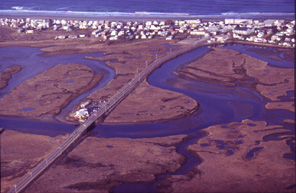 "At the turn of the century ecology and economics agreed on the classification
of tidal marshes as obstructing wastelands. Resource economics determined the
'best' use of land solely from the human and utilitarian perspectives. The initial
findings of terrestrial and marine biologists supported policies to make human
'improvements' over nature's perceived inefficiency. However, in the 1930s and
1940s a number of scientists, including wildlife biologist, Aldo Leopold, would
begin to demonstrate that the political and economic values assigned to coastal
wetlands and other wild areas conflicted with their biological integrity."
"At the turn of the century ecology and economics agreed on the classification
of tidal marshes as obstructing wastelands. Resource economics determined the
'best' use of land solely from the human and utilitarian perspectives. The initial
findings of terrestrial and marine biologists supported policies to make human
'improvements' over nature's perceived inefficiency. However, in the 1930s and
1940s a number of scientists, including wildlife biologist, Aldo Leopold, would
begin to demonstrate that the political and economic values assigned to coastal
wetlands and other wild areas conflicted with their biological integrity."
(p.112.)
7, The Ecology of Estuaries
"The expansion of wisdom is a difficult task for an individual, let alone a
society. In democratic cultures wisdom often may be overlooked at the voting
booth in the formulation of policy. For citizens and civil servants alike, confronting
popular notions of efficacy and justice takes courage. Rachel Louise Carson
was an advocate of unpopular causes, including fish and bird protection, preservation
of wild seashores, and opposition to heedless use of 'miracle' technologies.
Her final, best-known attack on the indiscriminate uses of DDT as an insecticide
was only one part of her larger and more positive view of the world and humanity's
place in the eco-energetic scheme....More than any other scientist she popularized
the oceans and the shores, with a profoundly religious respect for nature and
a practical appreciation for human ignorance. A contemporary of her fellow preservation
ecologist, Aldo Leopold, Carson focused more explicitly than he on oceans and
shores." (p. 134.)
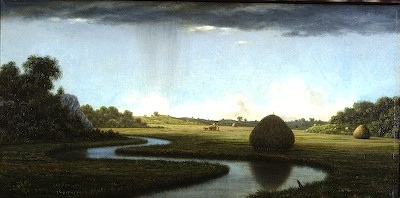
"The pejorative implications of the words morass, slough, muck and miasma still associated with wetlands need no comment, These terms are common synonyms for obstruction, nuisance and disease. Yet as part of the national 'battle to preserve the common estate,' coastal marshes and tidal flats became the focus of a major drive for the protection of natural resources during the late 1950s." (p.157.)
| Introduction | 1 | 2 | 3 | 6 | 9 | land as a focus | cultural landscapes | Themes | Thesis | Vocabulary |
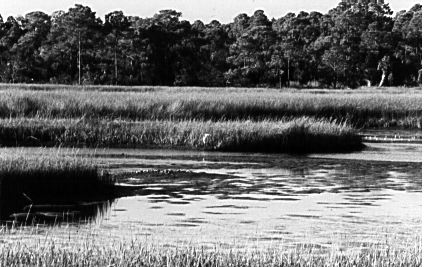
9, Americans and the Tidal Seas
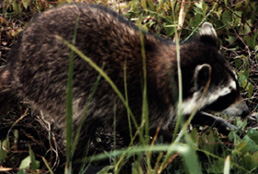 "As the American nation has grown older, its attitudes toward its natural resources
have changed and matured. Its legal underpinnings for environmental policies have been reinterpreted and reformulated to accommodate the changing understandings
and values. The estuarine preservation ideal that emerged in the mid- to late
1960s is one of the most recent developments in American ideas concerning resource
stewardship." (p. 188.)
"As the American nation has grown older, its attitudes toward its natural resources
have changed and matured. Its legal underpinnings for environmental policies have been reinterpreted and reformulated to accommodate the changing understandings
and values. The estuarine preservation ideal that emerged in the mid- to late
1960s is one of the most recent developments in American ideas concerning resource
stewardship." (p. 188.)
1 | 2 | 3 | 4 | 5 | 6 | 7 | 8 | 9
"The land was ours before we were the lands."
Landscapes as focal points of historical & ecological study, an index:
Environmental literacy | Environmental History
- Land
- landscape defined
- landscape as a scale of spatial organization
- landscape art
- landscape interpreted
- land as wealth from WEAL
- land system of the USA
- landscape education is a lifelong study
- land as historical geography
- land-use
- land-use planning ecologically
- land as the image of a garden
- gardens
- country
- community of life
- land tied into water
- land as places or terrain
- land as property
- laws of ecology that limits landscape changes
- scale of impact in land and landscape
- technology as an agent of changes in the land
- land as a metaphor
- land ethic
- land as energy
- Values inhering in landscape
- Worth.
| Introduction | 1 | 2 | 3 | 6 | 9 | land as a focus | cultural landscapes | Themes | Thesis | Vocabulary |
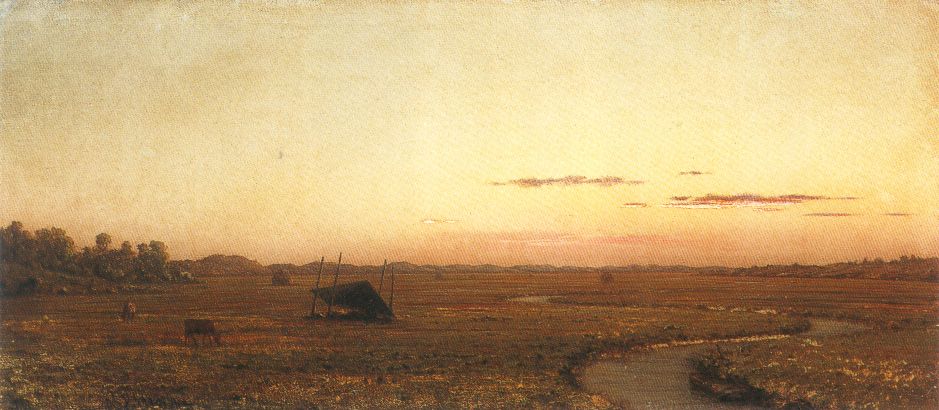
Martin Johnson Heade, Winding River Marsh, 1863.